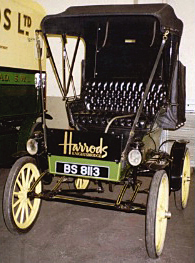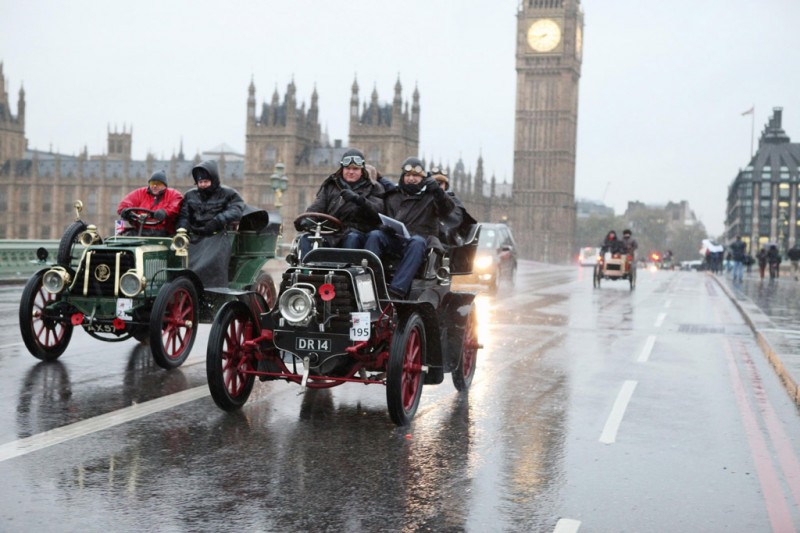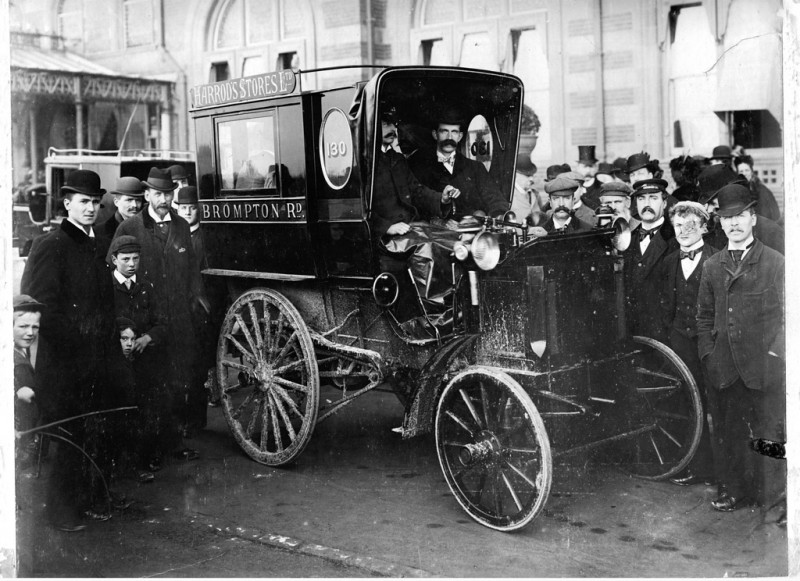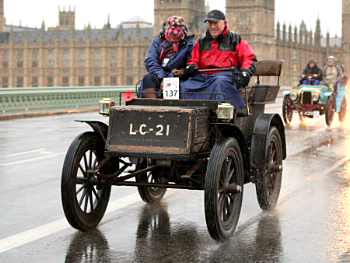Every November since 1896 there has been a road trip from London to Brighton. The distance of 50 miles by today’s standards is laughable with every car on the road being able to exceed this by huge measures. However, over 100 years ago, at the dawn of motoring 50 miles was like driving for an eternity. With no made road network and instead just tracks with ruts where carts had run grooves into them, cars back then had to be made of sterner stuff than their modern counterparts need be.
Modern cars are tested to so called extremes over pavé roads, rough cobble roads, making suspension components work to their maximum in order to find what the limits are. Back at the dawn of motoring, a pavé road would have been considered a smooth road.
It’s little wonder then that early cars were often derived from carts, purposely keeping the large cart wheels as they meant for easier travel over rough and uneven ground.
Nowadays, the London to Brighton route is far less difficult to traverse than in it’s inaugural year, with metalled roads and road signs showing which way to go, things have changed very much. No longer are the great steel leaf springs needed and nor are the cart wheels. However, that doesn’t make it an easy journey.
For the 500 or so cars entered into the London to Brighton run each year, it couldn’t be more difficult. Roads aren’t closed to modern day transport, meaning rush hour is still rush hour and stop/start in a vehicle with no brakes to speak of requires a quick thinking observant driver. Add to this the ever present fear of overheating engines and, particularly in the case of steam cars, fire – those 50 miles are fraught with dangers the modern motorist never has to consider.
A few years ago, I was lucky enough to join in the ‘fun’ on a Stanley Steamer, on it’s first run since restoration. It was an unforgettable day, for many reasons, not least of which because it was the coldest November day I can remember. There was one other Stanley Steamer in the run that year, which went up in flames by the roadside… not very reassuring, though fortunately nobody was seriously hurt.
However, against all the odds, the newly restored steam car made it, and in good time too. We’d battled the inconsiderate modern commuters in London in the morning and battled them again in leafy Sussex all the while with the Steam car plodding along and overtaking green eyed veteran petrol cars up all hills – such is the power of torque from steam engines.
We saw many a petrol car at the side of the road, often with steam billowing out from their crude radiators, which was always slightly ironic from a steam car drivers perspective but we carried on and got to the home stretch in Brighton where Geoff, the cars’ then owner, opened the taps – literally – and, we’re told, got it up to near 40mph along an appropriately cheering crowd of bystanders. An incredible achievement for a car over a century old.
The only injuries suffered were Geoff losing all hair on his hand and forearm, due to the simply ludicrous method of fuelling the burner. A petrol ‘jet’ spat liquid fuel into a tiny hole through the open air beside one of the rear wheels, meaning the faster you went, the more it missed the hole due to the head wind. Apart from that, a burnt coat, a melted gardeners glove and an arctic freeze were the only other things of any concern.
So, then to the alternate bliss of electric motoring. The noisy, dirty inconvenient to re-fuel petrol and steam cars were wonderful for those without electricity back in the 1900’s but on the other hand there were smooth, easy to drive, refined and simple to charge electric vehicles.
In New York alone, electric taxis became the preferred choice of transport for the rich and famous and even Henry Ford, who is arguably in large part responsible for the death of electric cars, was toying with the idea of producing an electric Ford. Even his wife refused to drive his ‘filthy’ creations and so instead drove an electric car. Vehicle range was up to a good 50 miles by the early 1920’s and car charging was incredibly reminiscent of any wall charger you see today; certainly no more complex than, “just plug it in”.
Thousands of electric cars were built in the early 1900’s with Detroit Electric producing over ten thousand alone – and it should be remembered that mass production in those days could have been construed of as few as 100 examples of any particular model.
It is with some surprise then that there are not more surviving veteran electric cars. Only a handful of Veteran Car Club members have electric cars and fewer still are able to make an appearance at the annual London to Brighton event with pre 1905 vehicles.
This year though, there is at least the chance to see one or possibly two veteran electric cars. The organisers of the annual London to Brighton Veteran Car Run are delighted to announce an exciting new partnership with Harrods.
The world’s most famous luxury department store not only will become an Official Partner to this year’s running of the world’s longest running and greatest motoring celebration on Sunday 3 November, but also will supply the participants aboard more than 400 veteran cars with some well deserved refreshments at the event’s official mid-way check-point in Crawley, Sussex.
With the extraordinary cavalcade of pre-1905 vehicles facing several slow and challenging hill climbs as the historic route ascends the South Downs, the provision of tea, coffee and pastries will be extremely welcome at the new ‘Harrods Stop at Crawley’.
The partnership has added significance as among the 33 ‘horseless carriages’ setting off from central London towards Brighton on the original Emancipation Run on 14 November 1896 was one of the very first Harrods delivery vans (photo above). Sadly the history books don’t tell the name of the two heavily moustachioed drivers but the vehicle was a Panhard-Levassor.
 Adding further interest, Michael Ward, Managing Director of Harrods, will be participating in this year’s Veteran Car Run driving an electrically powered Waverley dating back to 1901 (shown above).
Adding further interest, Michael Ward, Managing Director of Harrods, will be participating in this year’s Veteran Car Run driving an electrically powered Waverley dating back to 1901 (shown above).
“I am truly excited to be involved in this year’s London to Brighton Veteran Car Run. Dating back to the early 1900s, our vintage vehicles form part of Harrods’ rich heritage and I, being a personal car enthusiast, will take great pride in driving our most prized van from the collection in this iconic motoring event. We are also delighted to be bringing a taste of our Knightsbridge store to Crawley where we will officially host a pop-up café at the halfway stop for participants and spectators to enjoy on the day.”
Not only will Mr Ward’s Waverley be attending but a Mr John Hanson from the United States of America will be present with his 1902 Columbia Electric (registration number LC 21).
Source for information and names: Veteran Car Run



